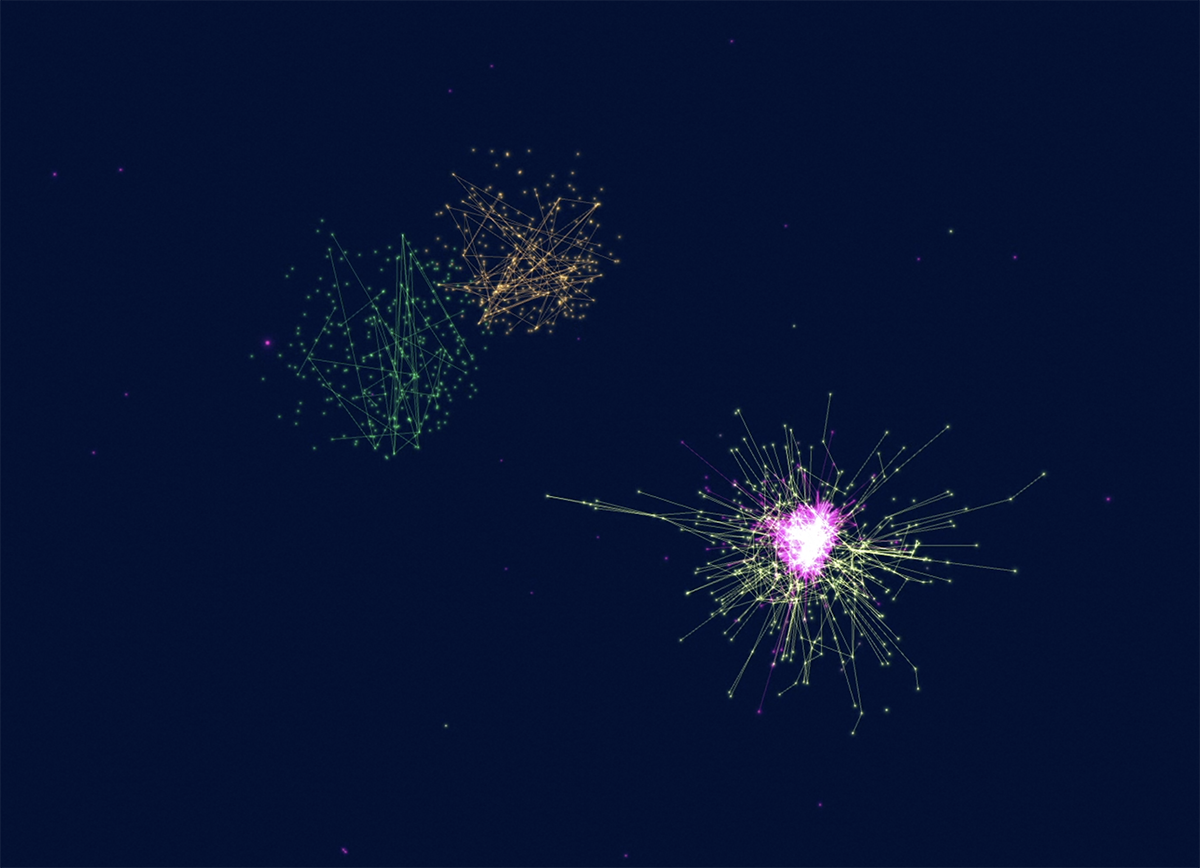About the work
In 2014, Barabási was invited to speak at TEDMED about network medicine, an emerging subfield at the interface of medicine and network science. He asked Mauro Martino, the first full-time designer in the BarabásiLab, to help develop a visual narrative for the talk. Martino produced videos to show the human interactome, a network of 13,000 human proteins connected by 141,000 protein interactions. But visualizing such an exceptional number of nodes and links was not possible in a single map. The videos display only a small fraction of all links at any time, their occasional flickerings merely hinting at the many, largely invisible links.
Team
M. Martino and A.-L. Barabási forBarabási’s 2012 TEDMED Talk. Research forthese visualizations was published by A.-L.Barabási, D. Ghiassian, M. Kitsak, J. Loscalzlo,J. Menche, A. Sharma, and M. Vidal











Contact
Social